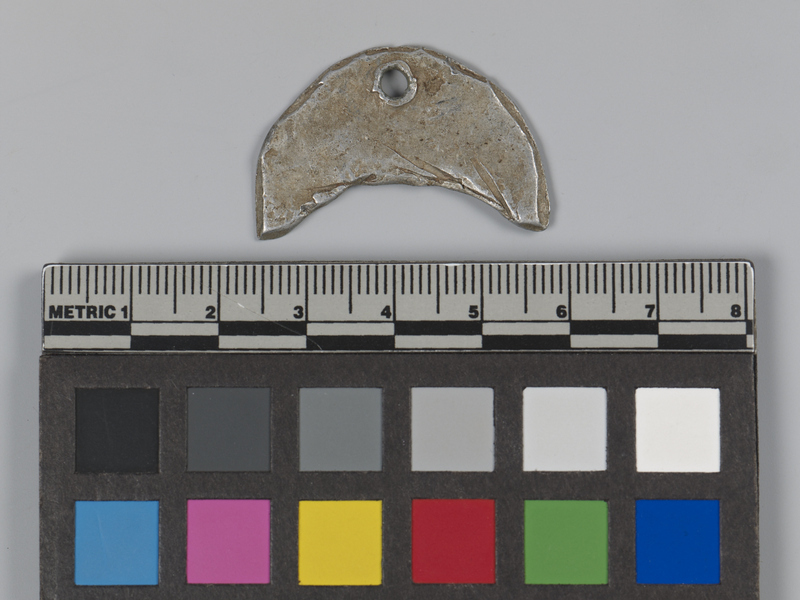Replica Weight Item Number: 3123/74 from the MOA: University of British Columbia

Description
Silver coloured metal weight. Object is a wide crescent shape, very thin, with a bored hole along the convex edge. Edges are roughly cut.
History Of Use
This object was not used as a gold weight; it was most likely created to be sold to tourists and was made as a response to the legacy of weights. Its colour, style, and workmanship show its modern origins. Akan weights would not have such rough edges or rusted as this object has, as those who owned weights took pride in them, and desired them to have an aesthetic appeal. Gold weights were historically made and used by the Akan peoples to weigh powdered gold ('gold dust'), which was used as the standard currency from the seventeenth to mid-nineteenth centuries. Locally referred to as abrammuo (singular mrammuo), they were usually made of a brass alloy and were based on the Islamic weight system. Each form had a known measurement, and those engaging in trade at that time would own a full set of weights. The pieces were cast using the lost-wax technique, ranging in form from simple geometric designs (thought to be the earliest forms) to figurative forms such as animals and humans, or items such as swords and Adinkra symbols.
Specific Techniques
Cast using the lost-wax technique ("cire perdue"). Akan/Asante brass-casters achieved works of great technical virtuosity by use of the lost wax process. A wax model was made and given several coats of a fine clay paste mixed with ground charcoal. A number of thin wax rods were attached to the wax model, which enabled holes to be formed through which the metal would be poured. After several coatings giving a thickness of between 3-6 mm had been applied, an outer layer of clay was carefully built-up around it and left until dry. The mould was heated and the molten wax tipped-out. A small clay cup containing the metal was sealed tightly against the hole leading to the inside of the mould. The mould and cup were then returned to the furnace and heated until the metal was molten. Tongs were used to quickly invert the mould so it was filled with the molten metal. The mould was then removed from the furnace and allowed to stand until it had cooled and the metal solidified. Lastly, it was broken open and the casting cleaned.
Item History
- Made in Ghana ? or Cote d'Ivoire ? during 1900
- Owned by Cornelia Hahn Oberlander before July 22, 2015
- Received from Cornelia Hahn Oberlander (Donor) on July 22, 2015
What
- Name
- Replica Weight
- Identification Number
- 3123/74
- Type of Item
- weight
- Material
- aluminium alloy metal ?
- Overall
- height 0.2 cm, width 3.5 cm, depth 2.2 cm, weight 1.9 g
Who
- Culture
- Akan
- Previous Owner
- Cornelia Hahn Oberlander
- Received from
- Cornelia Hahn Oberlander (Donor)
Where
- Holding Institution
- MOA: University of British Columbia
- Made in
- Ghana ? or Cote d'Ivoire ?
When
- Creation Date
- during 1900
- Ownership Date
- before July 22, 2015
- Acquisition Date
- on July 22, 2015
Other
- Item Classes
- metalwork
- Condition
- good
- Accession Number
- 3123/0074